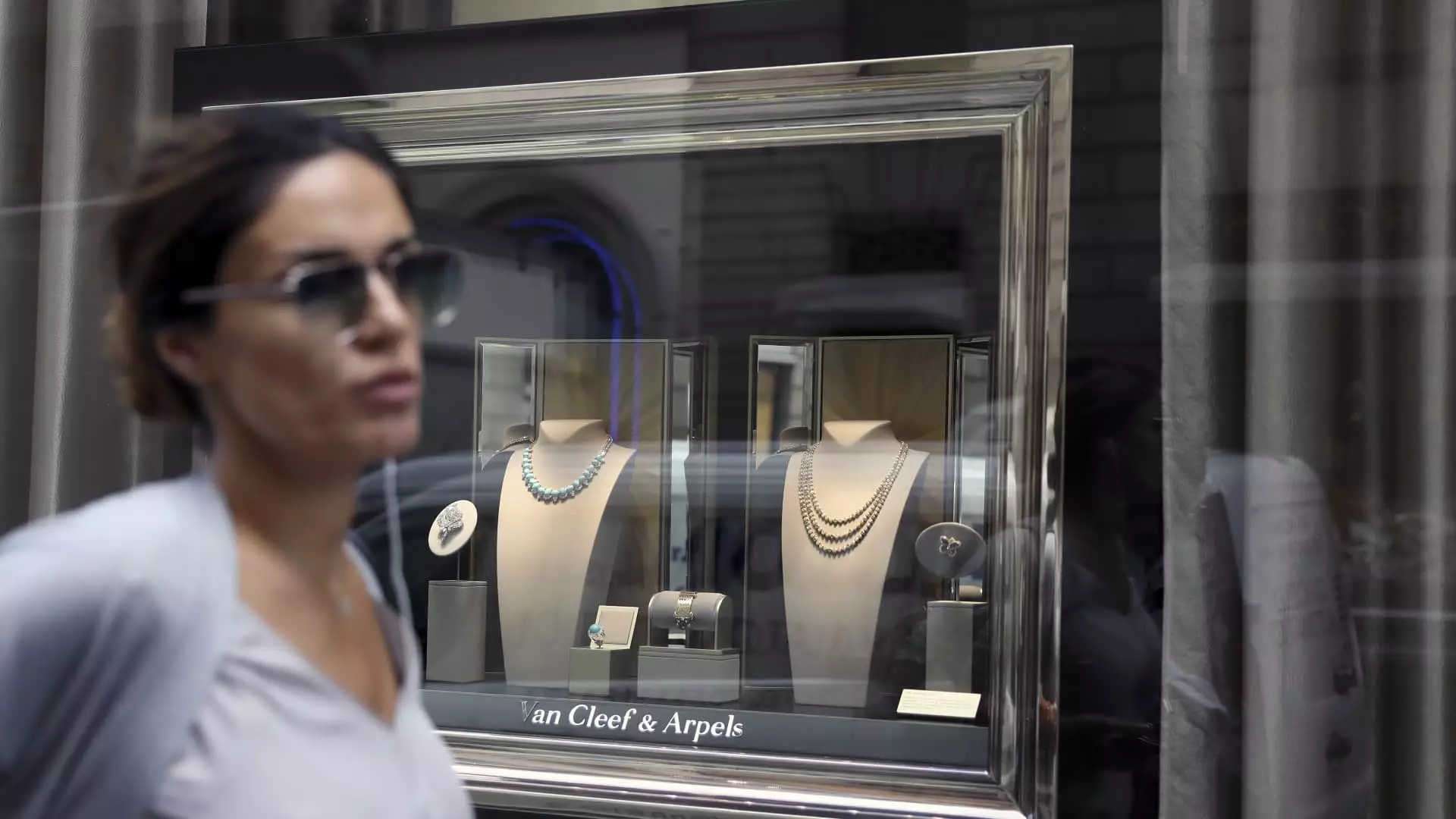In an age where economic uncertainty looms large, a peculiar phenomenon has emerged: the world’s wealthiest individuals continue to indulge in extravagant jewelry purchases, seemingly insulated from more significant economic pressures. While everyday luxury shoppers are retreating from high-end purchases, the super-rich’s obsession with exclusive pieces—like diamond-encrusted rings and rare gemstone necklaces—remains unwavering. This relentless desire for opulence is a stark reminder of both the widening wealth gap and the idiosyncrasies of luxury consumption, as not just any piece will suffice; the extraordinary is now a baseline.
Companies like Richemont, a titan in the luxury jewelry sector, thrive amid this consumption pattern. With illustrious brands like Van Cleef & Arpels and Cartier under its umbrella, Richemont’s jewelry division reported robust sales growth—indicating a unique resilience within a generally struggling luxury market. It is evident that the heart of luxury lies in desirability and rarity; as noted by Luca Solca of Bernstein, the strength of Richemont’s brands is unrivaled, a sentiment echoed even amidst anecdotal evidence suggesting that other luxury players are faltering.
The Comparative Landscape of Luxury Brands
However, not all luxury brands revel in such positive outcomes. Rivals like LVMH have not fared as well, especially concerning their watch and jewelry division. Their recent performance indicates a stagnation that contrasts glaringly with Richemont’s upward trajectory. The watch industry, in particular, has experienced a downturn—thanks in large part to a post-pandemic market flooding, where consumers emerged from lockdowns clutching more timepieces than they would ever need. This shift reveals an unflattering truth about luxury consumption: while jewelry is becoming a more frequent purchase, watches—with their often long-term investment appeal—are facing a protracted digestion phase.
What’s worth noting here is that the luxury sector reveals profound truths about consumer psychology. The emotional resonance of jewelry, perceived as gifts or tokens of personal significance, often supersedes that of watches. Luxury watches, with their intricate craftsmanship, may boast lasting value, but consumer motivation can shift swiftly, especially when social trends lean toward immediacy and fleeting adornment.
The Challenges Facing Luxury Watchmakers
It’s not just consumer preferences shaping the dynamics of the luxury market. Richemont’s challenges lie not solely in short-term economic turbulence but also in fundamental market adaptations. For instance, while Chinese demand remains a significant driver, the country’s continuing economic adjustments complicate matters for both watch and jewelry makers. As luxury purchases ebb and flow with economic conditions, the competitive nature of the market has become increasingly pronounced.
The private nature of many other luxury watchmakers, such as Rolex and Patek Philippe, further complicates the analysis of the luxury sector’s health. Their decisions and performance are cloaked in secrecy, leading to a scenario where understanding trends becomes nearly Sisyphean. Nevertheless, it has become undeniably clear: the luxury narrative is one of survival, and brands must adapt to the evolving expectations of their consumer base.
The Future of Luxury Consumption
Bernstein’s Solca makes a compelling argument regarding the innate characteristics of the jewelry market: it is nimble, responsive, and often less susceptible to prolonged economic downturns. Jewelry purchases are becoming more accessible and appealing compared to leather goods and haute couture fashion, further catalyzing Richemont’s favorable position. Instead of waiting for recovery in the watch segment, jewelry is quickly becoming the cornerstone of Richemont’s strategy.
Moreover, Richemont’s management reflects a keen awareness of sustainable pricing frameworks, pledging not to raise prices recklessly whilst others in the industry may intend to exploit market conditions for profit. The contrast in strategy speaks volumes about corporate responsibility. As the luxury sector grapples with ethical pricing and fair market practices, it is evident that consumers are not just purchasing status symbols—they’re also making value-based choices.
As we dissect these dynamics, the glimmering allure of luxury jewelry continues to hold an essential place in the narratives of wealth and power. The story is not merely one of lavish spending but rather an intricate interplay of consumer sentiments, economic conditions, and evolving market strategies that paints a broad and sometimes bleak picture of the luxury landscape. As we advance, it’s essential to question whether this glittering divide will remain a fixture, or if it will dissolve as economic realities force a reckoning at the high end of the market.

